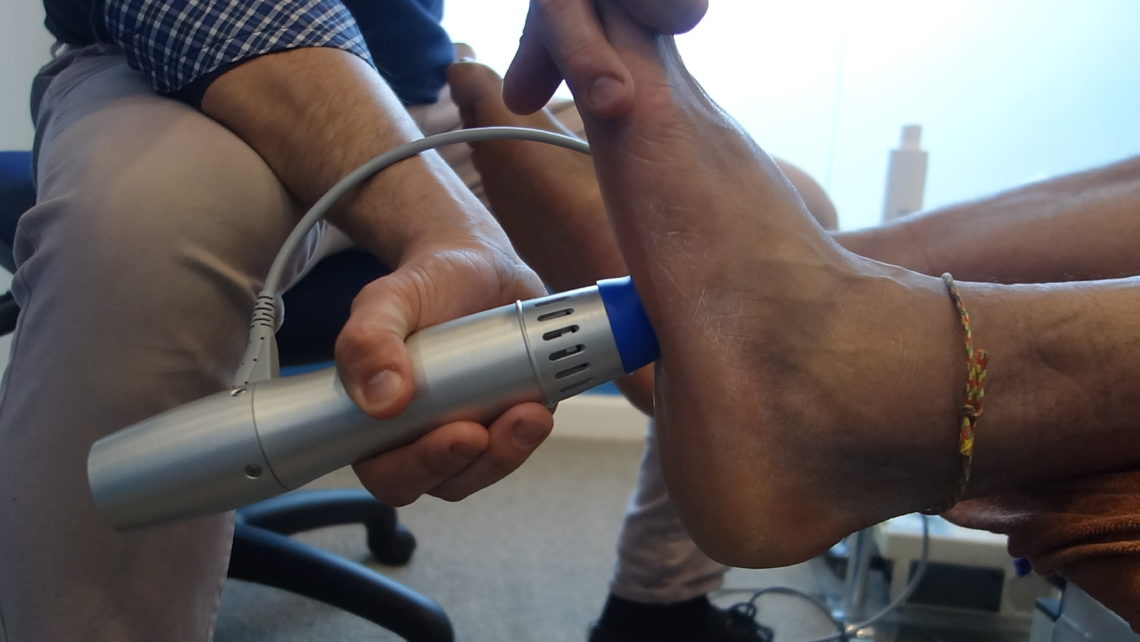
Shockwave Therapy Brighton | Core Chiropractic are happy to provide their patients with NEW Extracorporeal shockwave
therapy (ESWT)
What is Shockwave Therapy used to treat?
Shockwave therapy is used to treat many soft tissue injuries, but the most common are:
Plantar Fasciitis
Achilles Tedonitis
Lateral and Medial Epicondyltis (Tennis and Golfers Elbow)
Triceps Tendonitis
Patella Tendonitis
Muscular Trigger points
And many many more
We always recommend to treat these problems with normal hands on manual therapy to start. However if the problem persists then use Shockwave Therapy with other therapies combined.
How does it work?
We use a machine which pulses audible, low-energy sound waves, called shockwaves. These pass into the injured tissues which then cause blood vessels to open and increase blood flow to the injured area.
Most of the ligament and tendon issues listed above can become chronic because of the poor blood flow into those areas. This inhibits tissue regeneration and healing. Using Shockwave can speed up the bodies healing process and get you back into your activity asap
Shockwave therapy can be tender during treatment and patients can experience tenderness and sometimes bruising for a few days afterwards however we are aiming to kick start the healing process hence long terms affects are proven to be successful
What do treatments consist of?
Treatments at Core Chiropractic consist of the Shockwave therapy administered by the healthcare profeional following normal regular manual therpy which would be advised and administered in most cases as well
Hence we offer both forms of normal treatment and Shockwave within the same treatment
Further reading
For further information and advice please read the National Institute for Clinical Excellence as well as how the NHS use this for planar faciitis
Plantar Faciitis –
NICE Guidelines https://www.nice.org.uk/guidance/ipg311
NHS Review – https://www.wsh.nhs.uk/CMS-Documents/Patient-leaflets/TraumaandOrthopaedics/6460-1-Extra-corporeal-Shock-Wave-Therapy-ESWT-for-plantar-heel-pain.pdf
